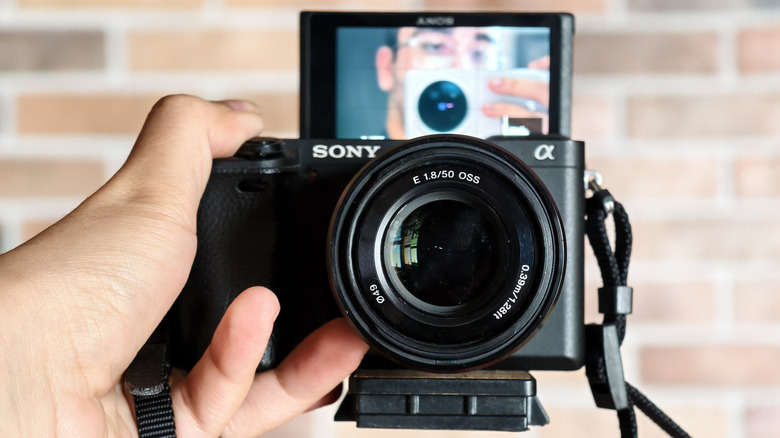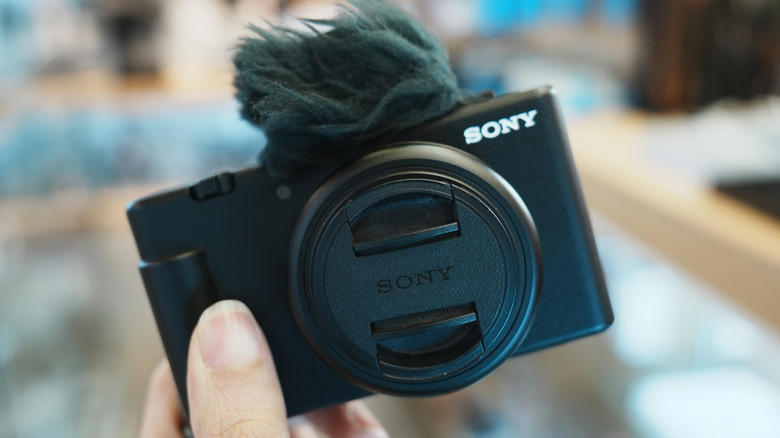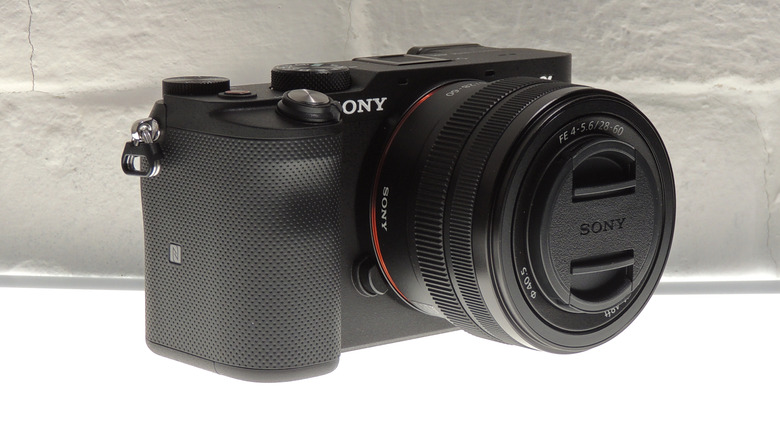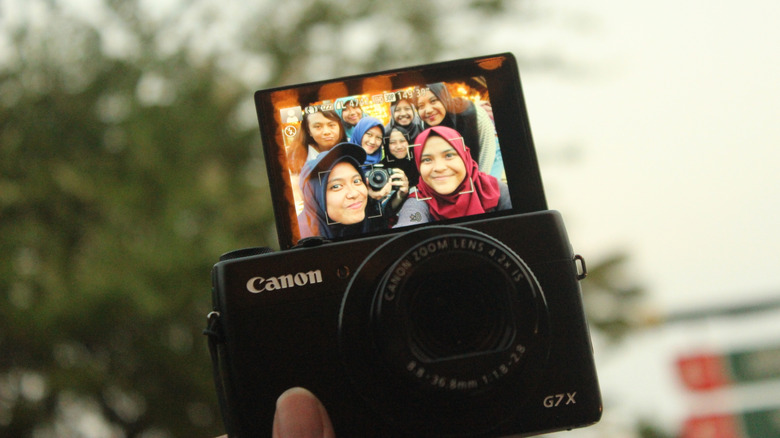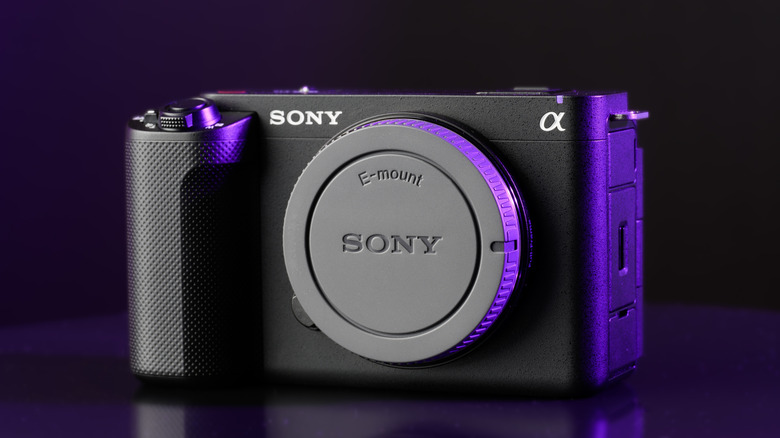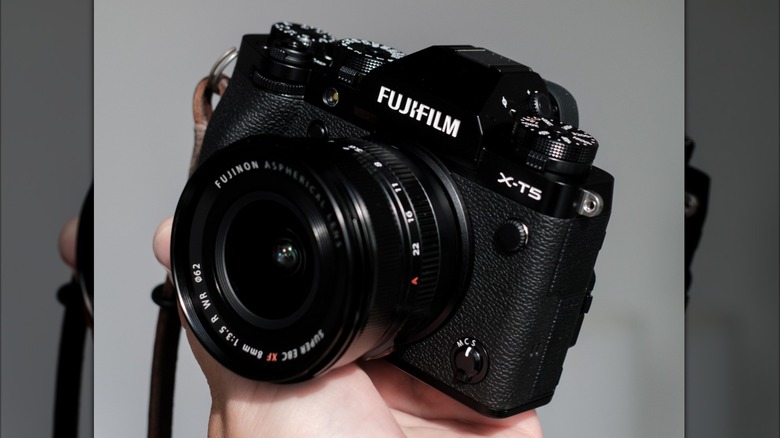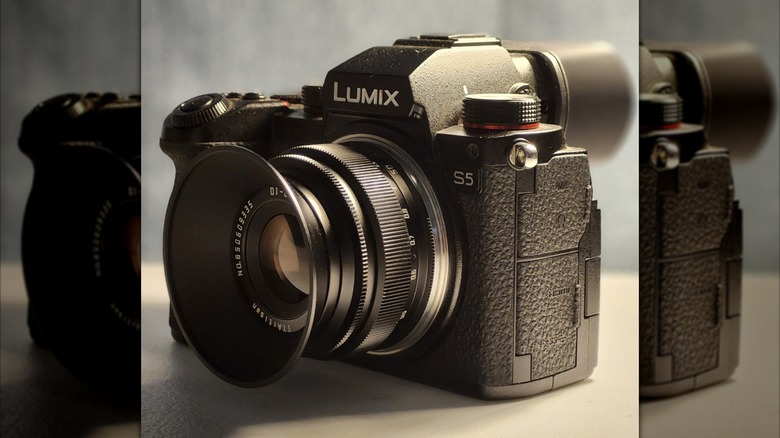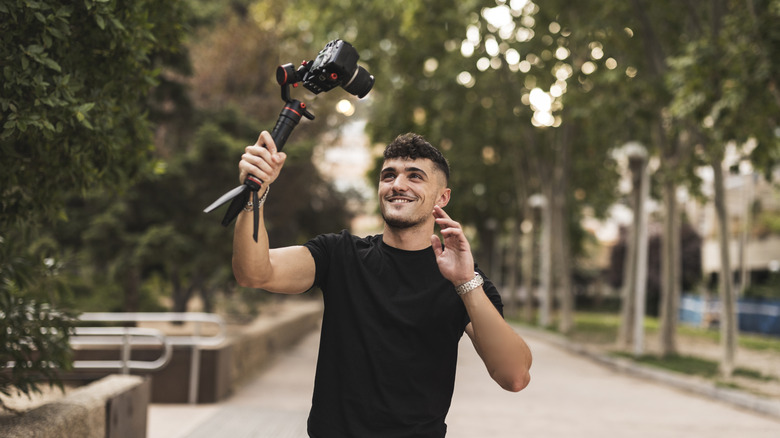6 Best Digital Cameras That Come With A Flip Screen
The creator economy is booming worldwide. There has never been a better time to create content online, whether it's on YouTube, Instagram, or TikTok. What makes it even better is the extremely low entry barrier since anyone can start recording with their smartphone. After all, some of the best smartphone cameras today can compete with DSLRs.
Once you gain a decent number of followers, though, you may feel the need to upgrade your production quality. That's when you should ideally pick up a dedicated camera for content creation. While there are several parameters to look for in a camera, one of the most important ones when recording yourself is a flip screen.
Before I started writing, I tried my hand at making YouTube videos. I made close to 400 videos over four years –- all by myself. I didn't have a camera person, so framing myself for a shot was the biggest challenge. Thankfully, I had a camera with a flip screen that made things a lot easier. The importance of a flip screen is even more emphasized if you're planning on vlogging or making videos with yourself as the subject. So, I decided to put my experience to good use by creating a list of the best digital cameras that come with a flip screen. From beginner cameras to high-end shooters, there's something for everyone!
Best budget camera with a flip screen: Sony ZV-1F
You'll see a lot of Sony cameras on this list, primarily because of their superior image quality and versatile lens mount. The latter doesn't apply to the ZV-1F, though, since it has a fixed 20mm f/2.0 lens. Despite this, the Sony ZV-1F is widely regarded as one of the best entry-level cameras for content creation. This is primarily due to the fact that it has a large 1-inch sensor that captures ample light and produces an attractive bokeh when recording. The wide aperture also adds to the effect.
Another aspect in Sony's favor is its extremely fast autofocus, and it makes its presence felt even on the ZV-1F. Autofocus is a vital part of recording oneself since you always want to be in focus when vlogging. Rounding up the feature list is a three-capsule mic array that captures your voice clearly while cutting out background noise. Sony also bundles a wind-screen with the camera so if you shoot outdoors a lot, your voice can still be heard clearly.
Along with the capable hardware, Sony has also provided some software perks to improve the quality of your videos. For starters, there are several creative styles or filters to change the look of your videos. Apart from that, what stands out is the artificial bokeh that you can add to your videos with the press of a button. This improves the background separation and makes your subject stand out.
The only downside of the Sony ZV-1F is the fact that the lens has a fixed focal length. As a result, you cannot zoom in or record faraway objects. Still, for under $500, this is forgivable -– especially considering the excellent image quality in most situations.
Best full-frame camera with a flip screen: Sony Alpha 7C II
This may come off as a slightly controversial choice since there certainly are better, more capable full-frame cameras than the Sony Alpha 7C II. However, the reason behind picking the 7C II is its compact form factor. Most full-frame cameras have a bulky footprint, which can make them uncomfortable to carry around. Holding a large and heavy camera and pointing it at yourself for long periods of time can make your arms sore rather quickly.
Sony addressed this with the Alpha 7C a couple of years back, and there's now an updated version of the camera –- the 7C II. Upon first glance, the camera appears to be a part of Sony's APS-C line-up, but it packs a 33 MP full-frame sensor with an AI processor for advanced subject recognition and tracking.
The Sony Alpha 7C supports 10-bit 4K video recording while also providing a host of presets that can add a creative touch to your footage. You don't have to worry about shaky footage thanks to the five-axis image stabilization onboard. Sony's E-mount lenses are fantastic and are available in a wide range of focal length options. You can also pick up lenses from third-party manufacturers like Sigma and Tamron.
Needless to say, the same quick autofocus capabilities from the ZV-1F also make their way to the 7C II. Notably, the camera only has a single SD card slot. This can be a deal-breaker for some since cameras in this price range generally have two slots. Considering the compact form factor, though, this is a reasonable exclusion.
Best point-and-shoot camera with a flip screen: Canon PowerShot G7X Mark III
Using a DSLR or mirrorless camera comes with its own set of downsides. Some may find the plethora of buttons intimidating, while others may not want to invest in additional lenses when shooting in different scenarios. For such users, a point-and-shoot camera like the Canon G7X III is a safe bet. All you have to do is turn on the camera, point to a subject, and hit the shutter button.
As for the optics, the G7X III provides a 1-inch sensor onboard with a 20.1 MP resolution. All of this is packed in a compact form factor that's extremely lightweight and compact. There's also a small flash module that pops out of an enclosure when you need it, which can come in quite handy for taking selfies in low-light conditions. The overall image quality is sharp, and the stabilization is top-notch so you can use the G7X Mark III for vlogging without worrying about shakes and jitters.
Now, you may be wondering what sets this apart from the Sony ZV-E1 mentioned at the beginning, as it has similar features and a fixed lens. So why is the Canon G7X III more than double the price? Well, the answer is that the Canon camera can optically zoom up to 4.2X, which is extremely handy when you're traveling and want to record faraway subjects. Whether or not it's worth the extra $500 is for you to decide based on your usage.
If you want a no-frills shooting experience, you cannot go wrong with the Canon G7X Mark III. However, if you are looking for a more versatile setup, there are some excellent cameras with interchangeable lens systems in this price range, such as the Sony ZVE10 that we'll be taking a look at later.
Best vlogging camera with a flip screen: Sony ZV-E10 II
The first-generation ZV-E10 was popular for two reasons — it was affordable, and it came with a host of features targeted towards content creators. The Sony ZV-E10 II builds on that foundation while providing an improved shooting experience. It's a mirrorless camera with Sony's 26 MP APS-C sensor. Unlike the fixed lens on the Canon G7X III or the ZV-1F, the ZV-E10 has an interchangeable lens system. You can choose from a plethora of E-mount lenses based on your usage. Sony bundles a 16-50mm f/3.5-5.6 kit lens in the box which is about average, but still more than good enough to get started.
Apart from the usual set of features like creative shooting modes and fast autofocus, what stands out about the Sony ZV-E10 II is its ability to record videos in 4K at 60 fps and HD video at up to 120 fps. Thanks to this, you can slow down the footage in post-production and play it back at 24 fps to create a slow-motion effect. Such high frame rates are generally found on more premium cameras, so it's nice to see Sony democratizing it.
Sony has also optimized the software for vertical videos, a feature that's not present on any other camera on this list. Then, there's the ability to add artificial bokeh for background separation. Finally, the three-capsule microphone with a wind blocker completes the package, making the ZV-E10 II one of the best cameras for vloggers and content creators. This should be the ideal choice for most people looking for a camera under $1,000.
Best camera for photography with a flip screen: Fujifilm X-T5
Most people buying a camera with a flip screen use it to record videos. However, there is a possibility that one wants to buy a camera primarily for photography, but also wants to use it occasionally to take selfies or record vlogs. While most cameras mentioned above can perfectly fit that use case, the Fujifilm X-T5 would perhaps be the most appropriate choice. After all, Fuji's X camera line-up is known for its brilliant color science and unique lenses for photography — couple that with a massive 40.2 MP APS-C sensor and the results are stunning!
Photos taken with the XT-5 are detailed with low noise levels even when shooting in the dark. The compact form factor means you can use the camera for street photography or when traveling with ease. It is slightly bulkier than some of the Sony options mentioned above, but nothing unwieldy. The onboard IBIS helps with image stabilization so you always end up with a sharp photo. Purely for still images, the Fujifilm X-T5 is right up there with the best. While videos aren't its forte, the camera still holds its own if you're only going to be recording occasionally.
Notably, the screen on the XT-5 is a bit unique. While it does articulate, it doesn't flip completely unlike the other options on this list. It's only slightly visible and tilted vertically so you may find it difficult to frame yourself at certain angles. Those who shoot vertical videos will not have an issue, but it's not the most convenient solution for shooting in the landscape orientation. If you can get past this, the XT-5 is a photography champ.
Best affordable full-frame camera with a flip screen: Panasonic Lumix S5II
Looking for a full-frame camera that doesn't break the bank? The Panasonic LUMIX S5II is your go-to option. It's considerably cheaper compared to the Sony Alpha 7C II while outputting similar images and videos. The autofocus is fast, and the camera records sharp videos with good dynamic range in all lighting conditions. Panasonic uses L-mount lenses so you can connect lenses from Leica — one of the best premium camera brands — in addition to the Lumix line-up.
Unlike the Alpha 7C II from Sony, the Lumix S5II is not compact, so that is a trade-off you have to adjust to. It is slightly on the heavier side if you plan on carrying it in your hand while recording yourself at all times. However, it excels in how simple it is to use without any prior knowledge or experience of using a camera. You don't have to worry about manual aperture, ISO, or shutter speed settings. The S5II works well in auto mode and even has excellent stabilization, so you won't need to depend on a gimbal in most cases.
This makes it an excellent first camera for a lot of people. Moreover, you can shoot videos in up to 6K at 30fps without worrying about the camera overheating. Over the years, Panasonic has remained an underdog in the camera space, with big brands like Sony and Canon enjoying the limelight, andtThe Lumix S5II is a great example of that. It punches well above its weight and is an excellent option for those who want to step foot into the world of full-frame cameras.
How we picked the cameras
I've been a camera enthusiast for over a decade now, with experience in content creation for the better part of six years. Having shot hundreds of videos all by myself, I have developed a knack for identifying which cameras offer a pleasant experience when used by solo creators. While a flip screen has become quite common on most cameras today, it's important to gauge whether or not the rest of the package delivers a punch.
A camera with a flip screen by itself isn't good enough to record high-quality content. So, I've given equal weightage to image quality, form factor, features, price, and overall usability while determining the products to include. Moreover, it's vital to address different types of buyers since everyone may not want to spend top bucks on a camera, or everyone may not be comfortable using a mirrorless camera with a ton of confusing options.
Owing to this, I've ensured to cater to various price segments and types of users. Right from beginners to professionals, from budget options to premium camera, you can pick the best camera for your specific usage.
